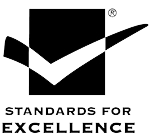Arnie Gay
The Father of Annapolis' Modern Sailing Industry
Arnold Channing Gay, known to the community as Arnie, is remembered as the father of Annapolis’ modern sailing industry and is revered not only for his sailing prowess but for his contributions to and passion for the city of Annapolis. Originally from New England, Arnie drifted into Annapolis’ harbor aboard his schooner Delilah in 1946. What he recalls from his arrival was “you could sit here with a .22 rifle and shoot rats or anything else you wanted to all afternoon. There were beat up old buildings, and a really terrible place. It was a dump.”
Arnie would spend the next 48 years transforming Annapolis’ run-down waterfront into a prominent sailing capital. Gay’s memory is alive and well in the city of Annapolis and his family still resides in this world class sailing center.
In 1946, Arnie Gay sailed into Spa Creek aboard his schooner Delilah with less than two dollars in his pocket. He picked up a few odd jobs and began his career as a boat broker, yachtsman, and sailing instructor in Annapolis.
"Originally when I came here you had a guy tonging for oysters in the winter, and in the summertime would paint bottoms on boats."
Arnie Gay Tweet
Arnie had a vision to change the face of the city’s tired waterfront. The thriving seafood industry that once supported the city’s economy was fading quickly. Arnie, being an ambitious visionary, knew that Annapolis could be molded into the sailing capital of the world and all he needed to make this dream a reality was participation.
When Arnie first arrived in Annapolis, he had a job along the Severn River building Indian Landing 20s at the site of the oldest boat yard in town. He would work at this location, at the boatyard at the end of Shipwright Street, until he eventually purchased the property.
Arnie’s ultimate goal was to shape Annapolis into a sailing center, and to accomplish this Annapolis would need world-class skill. He needed boaters to actively participate in the sailing and boating industry in the city. “I kept promoting the harbor and the yachting industry….I got laughed out of town, that boy in the boatyard at the end of Shipwright Street.” But their snickering didn’t dampen his enthusiasm.
With the state of the city’s waterfront, Arnie knew the only chance he would have of attracting boaters to Annapolis was to offer quality services. In order to upgrade the quality of the services, Arnie needed to employ skilled laborers who could make his boatyard shine. But the men typically employed on the waterfront were not always easily-won. Arnie recalls, “Quite often a lot of disputes in the boat yard were settled with a pair of hands. It was a different era (1940s and 1950s), these were rough guys…..Once you had their respect there was no problem, but you had to get that respect somewhere along the line.”

The Annapolis to Newport Race is one of the most historic and well-known of the United States East Coast blue water races. Linking two seaports dating from our nation’s founding, Annapolis and Newport, the race provides a contrast between the country’s largest estuary, the Chesapeake Bay, and the Atlantic Ocean. The course heads south for 120 miles from Annapolis to the Chesapeake Bay Bridge Tunnel, then east to the Chesapeake Light and then northeast to Newport.
Arnie sailed in many Annapolis-to-Newport races and in 1978 won the Bermuda race in “Babe”, one of the last wooden racing yachts. The record time held for the Annapolis-to-Newport race is 42 hours, 58 minutes, and 12 seconds, held by Joseph Carrera.








